Begonia elatior: species, care and reproduction

Each plant is beautiful in its own way, but there are still undisputed leaders in floriculture demand. One of them is elatior begonia, which will be discussed in our article.
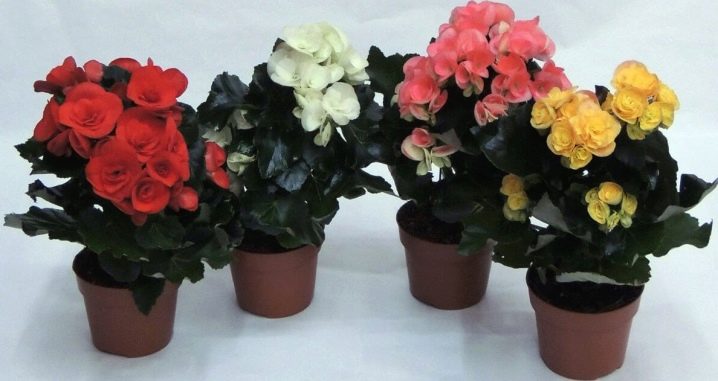
Peculiarities
Begonias in botany are usually called perennial ornamental plants that inhabit the highlands of hot tropical forests. A characteristic feature of this species is the pronounced asymmetry of the foliage. The flowers are quite lush, you can grow a culture both at home and on the street. The specific name is given by the name of the discoverer (Begon). The species has been confirmed to grow in India, South America and African countries.
Begonia was first discovered and described in the Antilles. Based on the initially discovered 6 species, breeders have already managed to breed more than 1000 varieties. The plant height is relatively low. For decorative purposes, it is used mainly for interior decoration. The use of begonias as climbing crops is also common.
Begonia elatior is splendid. It is readily bought in flower shops, because it can be used to make beautiful bouquets.
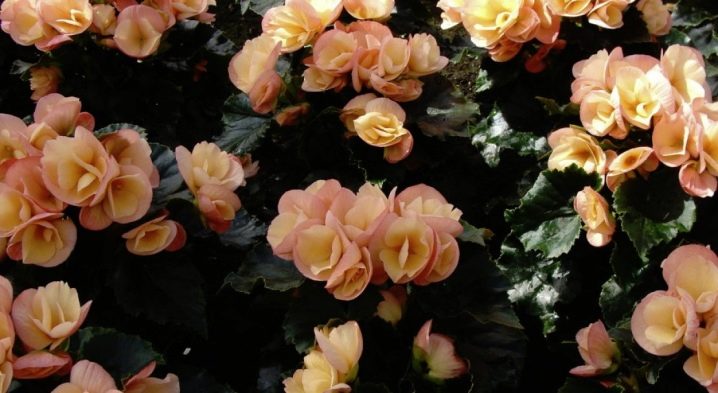
In a number of studies, it has been convincingly proven that this plant is effective in inhibiting the development of microbes. Basically, the phytoncides secreted by the flower fight staphylococcus. Therefore, begonias have become frequent guests in medical institutions and in kindergartens.
Plants are considered tall, reaching 0.25-0.37 m. The average growth group includes varieties whose growth ranges from 0.15 to 0.18 m.The lowest begonias grow only up to 0.08-0.15 m. To date, the following have been displayed:
- varieties with a straight stem;
- shrubby begonias;
- creeping flowers.
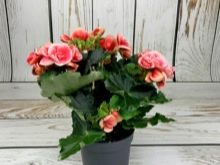
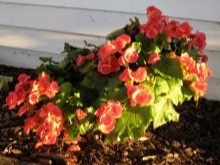
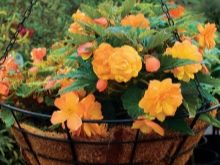
There is a variety that can bloom all year round. However, it is impossible to grow it on the street in the Russian climate. This plant requires continuous heat. Traditionally, begonias are divided into 3 main categories:
- deciduous ornamental (with large or medium leaves covered with wide stripes);
- bush (no pronounced specificity);
- tuberous (representatives of the group differ from each other only in stems and flowers).

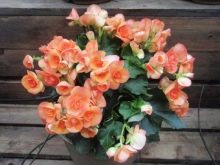
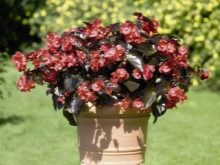
Important: begonias can form a different root system, depending on the conditions of detention.
The roots of street specimens are tubers. Indoors, rhizome or fibrous roots are formed. The tuberous type forms the tallest and strongest stems. But the other two types of root systems, rather, are suitable for planting in decorative baskets.
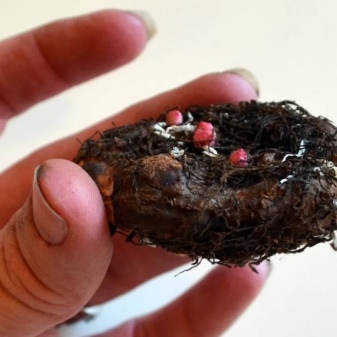
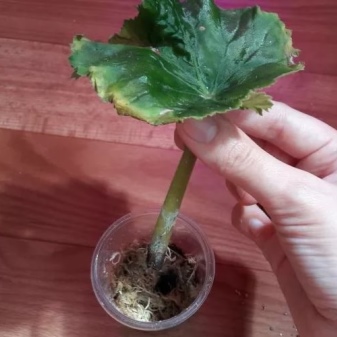
Varieties
"Borias"
Speaking of begonias, it is impossible to ignore the Borias variety. It differs not only in external attractiveness, but also in minimal whimsicality. The plant blooms once every 6 months, which is quite unusual for the species as a whole. The second bloom occurs in the autumn and winter months, while other indoor crops are resting. But such a pleasant result can be obtained only with careful care.
The greatest height of the bush at "Borias" can reach 0.4 m. On a thick stem are leaves that look like asymmetrical hearts. From above, the leaf is colored deep green. The underside is lighter, veins are very clearly visible on it.
The flowers of this variety are of both double and regular type, mainly painted in two different tones.
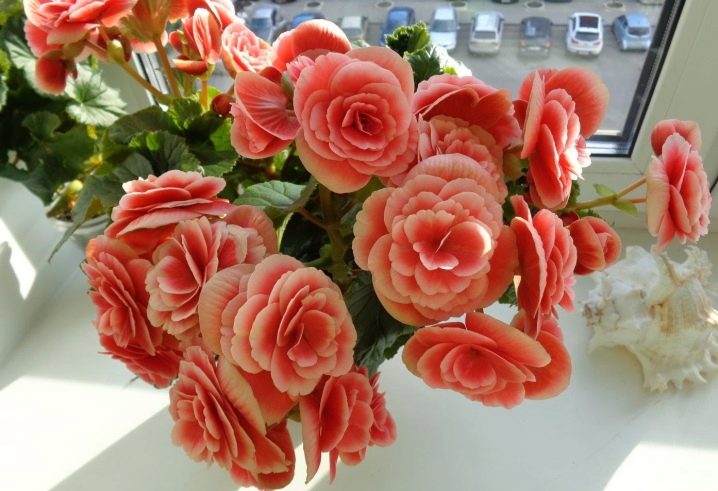
"Charisma"
"Charisma" also deserves attention.Strictly speaking, this is not a variety in the usual sense of the word, but a whole varietal group. It includes only stunted plants with green foliage, which has a glossy tint. Terry type inflorescences are formed. Flowers can have:
- dark pink;
- dark salmon;
- orange-reddish;
- salmon pinkish color.
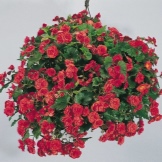
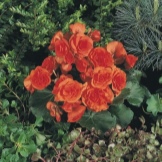
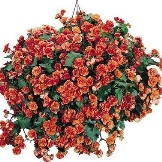
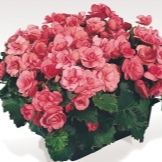
"Baladin"
Bushes "Baladin" grow up to 0.3 m. An attractive feature of this variety is a large number of flowers (sometimes over 70). Moreover, the tonality of colors can be very different. There are also carmine-red, and just red, and pinkish ovaries. Hence the common name - "bouquet in a pot".
Important: the inflorescences must not be touched, otherwise the hands will be painted.
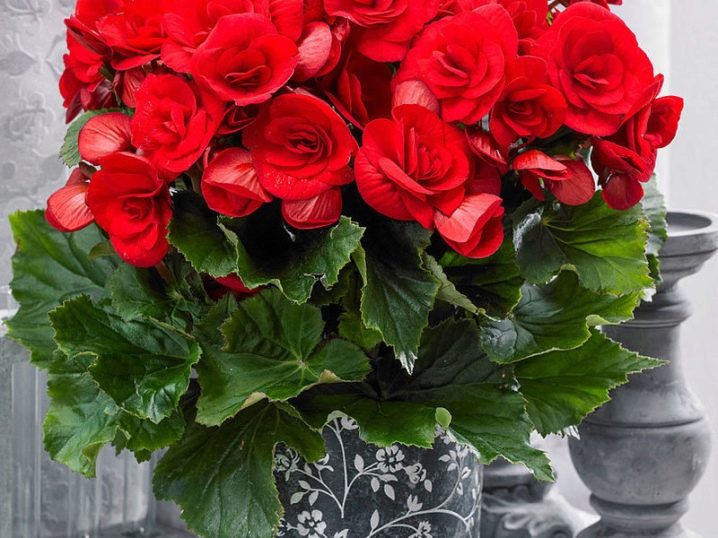
Annabelle
The medium-sized Annabelle begonia also deserves attention. This culture forms double yellow inflorescences. The plant can be grown both on windowsills and in open ground. Flowers persist from November to July.
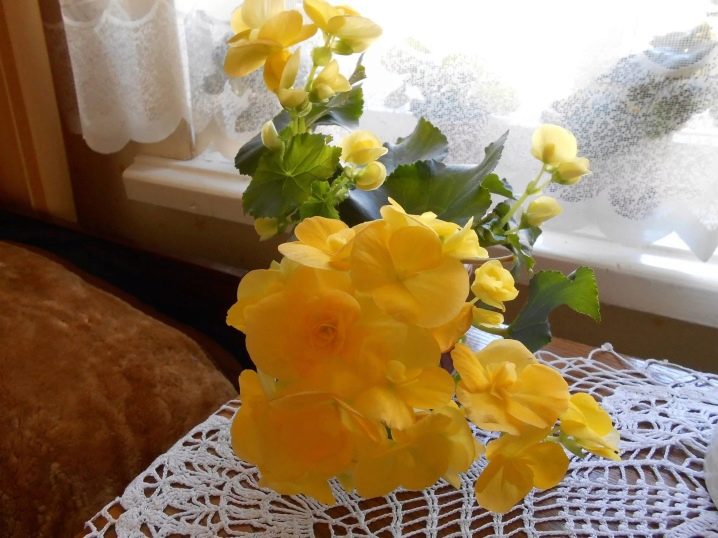
"Azotus"
"Azotus" also gives good results. True, such flowers can only be grown in a room. Pink terry buds of considerable size look attractive. The growth of begonia is small.

Bellona
But at Bellona, the height of the bushes is up to 0.4 m. Bright red flowers form on the bushes. The plant is only suitable for indoor growing.
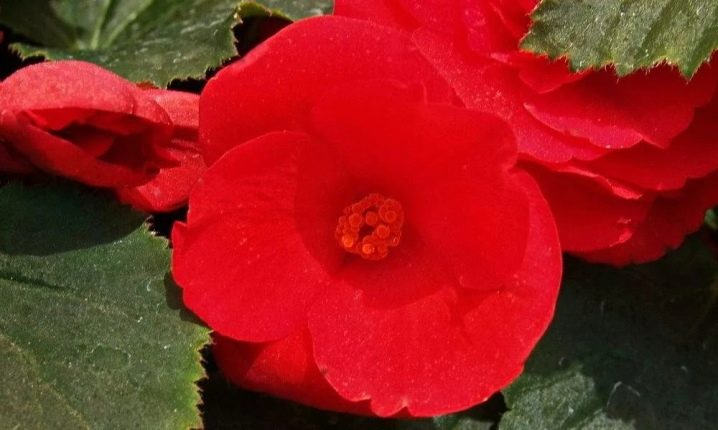
"Kyoto"
The Kyoto variety produces large white buds. Again, it should be said that the culture is suitable only for indoor cultivation.
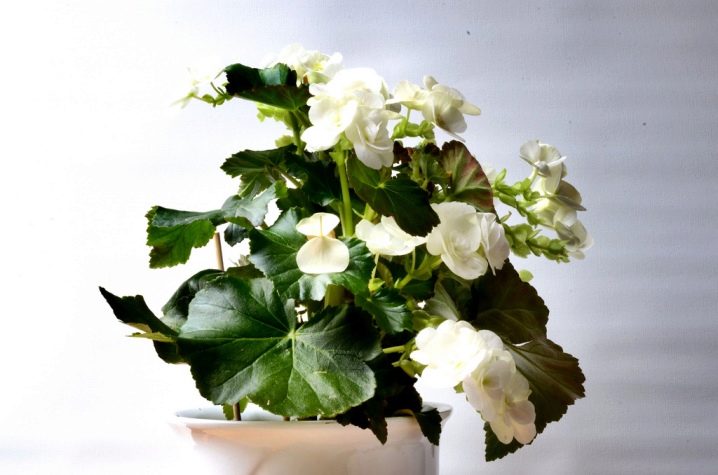
"Renaissance"
"Renaissance" reaches a very high height - up to 0.6 m. Red flowers of a double type are laid on its bushes.
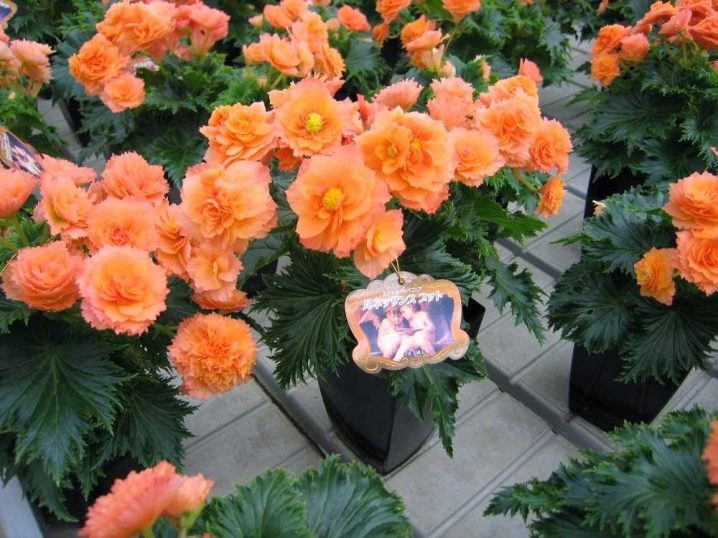
Berseba
The unusual name "Berseba" has a very beautiful culture with abundant flowering. The plant develops calmly at a moderate temperature. It definitely needs good lighting. Begonia "Mix" is more widespread than other varieties of this plant. But the culture still deserves close attention, and the slightest mistakes in its cultivation can turn into unpleasant consequences.
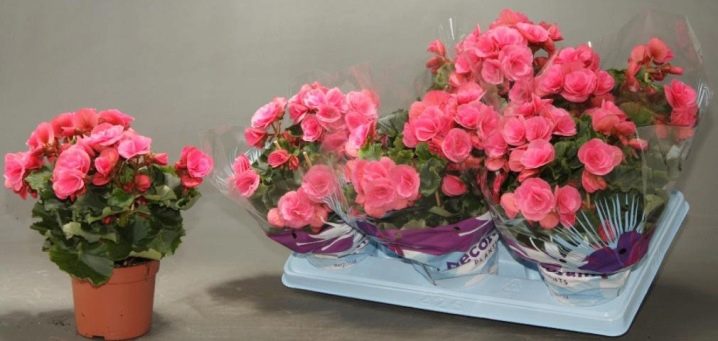
Growing conditions
Lighting
Begonia thrives in daylight. But the sun's rays should be scattered. It is advisable to expose the flower to the east or west windows. There is not enough light in the north, and severe burns can occur in the south.
Important: this culture develops best in partial shade.
In the winter months, the normal development of begonia is impossible without enhanced electrical illumination. But we must remember that it is impossible to rapidly increase the illumination. In this case, burns may occur. And if the plant is still young and weak, it may even completely die.
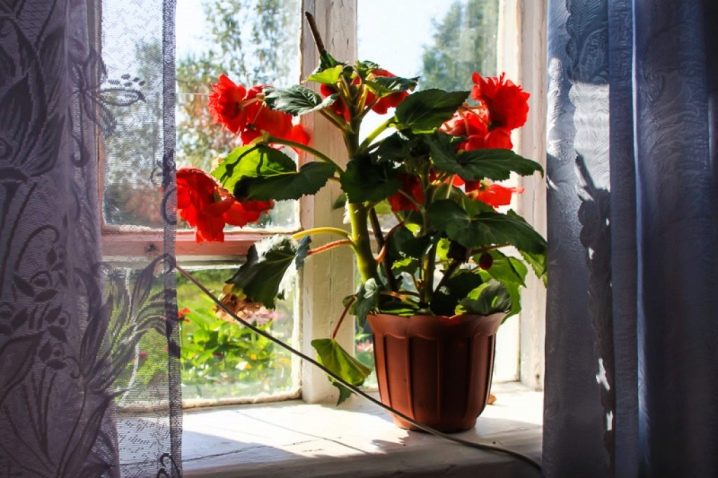
Temperature and humidity
The plant perfectly feels itself in the temperature range from 21 to 25 degrees. It really needs warmth, the slightest hypothermia, even for a short time, has an extremely negative effect on it. Therefore, it is required to protect begonia from low temperatures.
Cold drafts can be very dangerous, even if the temperature difference is only 2 or 3 degrees.
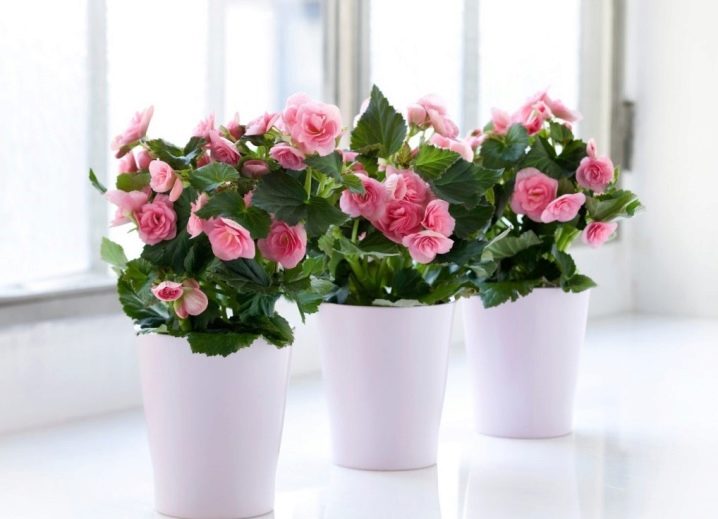
Transfer
Experts-experts strongly recommend not replanting begonia unless absolutely necessary. It is better to approach the landing after purchase as responsibly as possible, diligently excluding violations. The fact is that the root system of the plant is highly sensitive. At first glance, the most insignificant damage can be disastrous. Having bought a begonia, you need to keep it in a transport pot until flowering is complete.
Sometimes it becomes necessary to transplant the culture at an earlier date. Then you will have to act even more carefully. The standard approach is to water the land 4-6 hours before starting work. The bottom of the selected container is covered with a drainage layer. The best options are expanded clay and sphagnum.
Then carefully selected and tested soil is poured.
Important: it is even worth calcining it, regardless of where this soil is taken. The purpose of the backfill is to keep the bush at the same level as before.
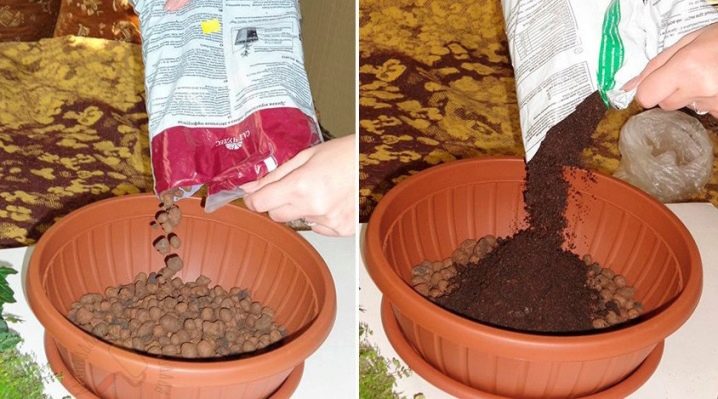
When removing a plant from an old pot, you need to preserve a clod of earth as completely as possible. In this form, it is transferred to a new container.
Add the soil mixture immediately. It needs to be slightly compacted and watered. Watering intensity should not be excessive.
Attention: stresses and diseases of the transplanted exotic are almost inevitable. Therefore, it is still worth considering in advance whether it is possible to do without a transplant.
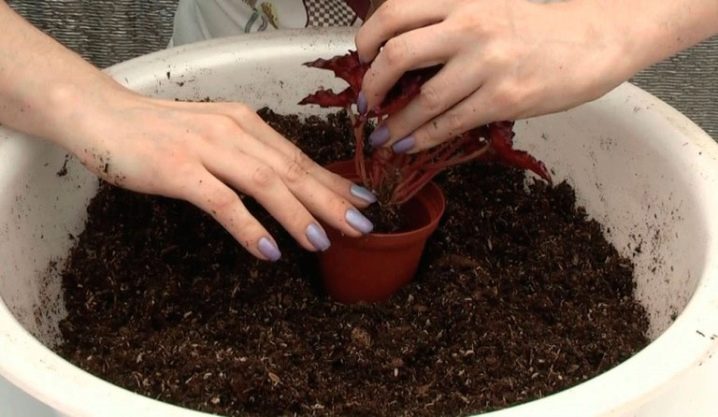
How to care?
Top dressing
The time to fertilize begonia comes as soon as buds appear on this plant. There should not be many of them - already the first buds allow you to apply fertilizer. Indoor crops are best fed with a compound liquid fertilizer. To mix it with water, so that there are lush flowers, you need to 3 times a month. At the same time, the same intervals between dressings are carefully maintained.
Attention: in winter, when flowering is complete, fertilizers cannot be applied. This can disturb the peace of the culture and even lead to its death.
Phosphorus and potassium compounds are used 2 times a month. They begin to apply them as soon as the plant blooms. It is noted that this additive gives the flowers a healthier look.
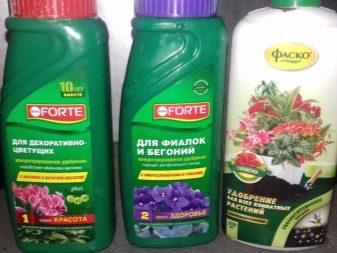
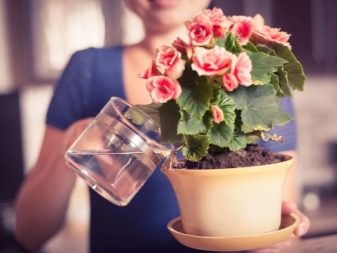
Watering
A conversation about caring for begonia at home cannot be carried on ignoring watering. Humidity must always be kept at an optimal level. But along with moistening the earth, one must also remember that there should be no stagnation of water inside the pot. In any season, such stagnation affects the plant very badly. In summer, begonia requires a lot of water, otherwise it will not be able to develop fully.
At the same time, carefully monitor that the excess liquid completely flows into the pan. From there it is immediately drained. Floriculture experts believe that the flower must be watered in a strictly defined mode. If one day the begonia was watered at 9 in the morning, and on the other - at 1 or 2 pm, then it cannot tune in properly. Watering time is observed with an accuracy of at least an hour; ideally, the error should not exceed 10-15 minutes.

In the summer months, the plant is watered at least once every 3 days. If the weather is hot, they are guided by the drying out of the soil. With the onset of autumn, you need to water less often. As soon as the cold comes, begonia goes into a state of hibernation. Irrigation becomes even less frequent; to help the flower, you can put vitamin preparations in the water.
It is undesirable to focus on the calendar spring or on the increase in daylight hours. Only heat needs to be taken into account. When warm days come, begonia is "woken up" by activating watering. At the same time, not only its frequency increases, but also the amount of water used.
Important: the liquid is taken warm; boiled water is allowed, and it is necessary to irrigate the soil more carefully, without eroding it.
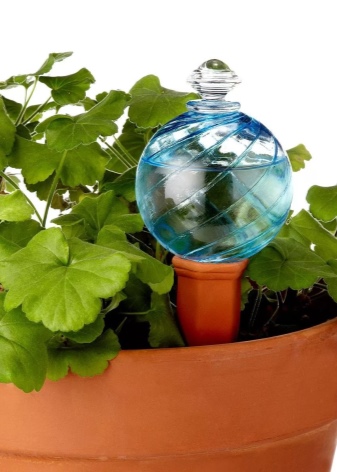
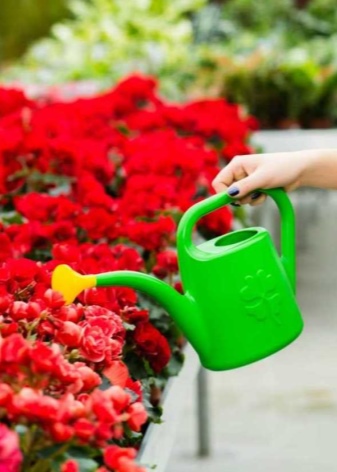
Pruning
The bushes are usually made as compact as possible. To do this, pinch the top of the head. It is noted that after this, young shoots develop more actively. And the green mass as a whole grows more readily. You need to remove the tops in the spring, and if the stems are stretched excessively, they pinch again.
It is worth remembering about the rapid aging of the perennial culture. You will have to systematically remove old foliage and fading corollas. If you leave them, the grower will not get any benefit, on the contrary, such a "dead weight" only consumes nutrients in vain, depriving the plant of its decorative properties. Partially removing the foliage from the bottom, thereby achieving better ventilation of the root areas.
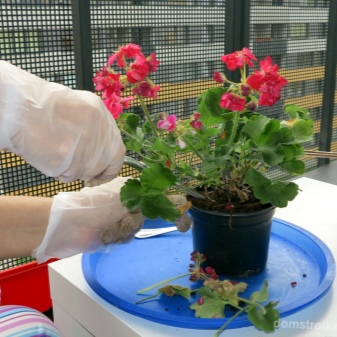
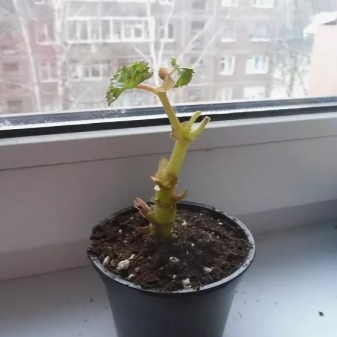
Experts note that the formation scheme should be thought out even at the earliest stages of flower development. Already when the trunk reaches a height of 0.06-0.07 m, the top is cut off, otherwise the lateral shoots will form very poorly. Further, the irrigation is reduced as soon as possible, and in this mode the begonia is “carried on” until the intensive growth is resumed.
The tops of the side branches are cut off when a height of 0.1 m is reached. But the stems must not be shortened under or flush with the outward-looking bud. Usually nothing else is needed to form young bushes.Too long stems are only periodically shortened.
Important: if any shoot dries up, it also needs to be cut off immediately.
Bloom
When grown in warm rooms, begonias produce bright flowers and are very intense. Competent care allows you to extend flowering to the maximum. An important requirement in this case is to get rid of all female buds at the very beginning of the formation of flowers.
Outwardly, the flowers of an exotic plant resemble daffodils, carnations, roses. Graceful, noble-looking petals are formed. With their help, you can decorate absolutely any space. The full onset of flowering is helped by:
- regular rejuvenation;
- transfer to a new container;
- change of soil (to get rid of rotten remnants of rhizomes).
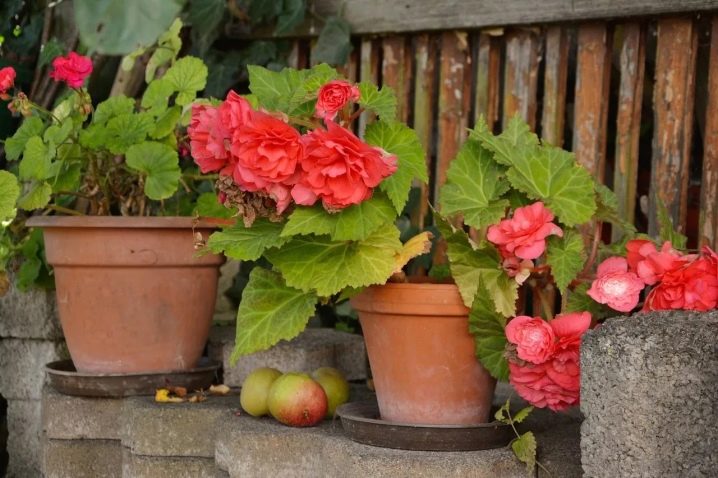
Reproduction
Experienced gardeners note that the easiest way to propagate begonia is in December. In extreme cases, they choose November or October. The seeds of this culture are tender and very susceptible to adverse factors. And therefore it is categorically unacceptable to add additional substrates to the soil. You can expect the emergence of seedlings in about 14-17 days.
The developing shoots of seedlings should be dived. They are also systematically adapted to sunlight. Expose the pots to the sun first in the morning.
For home cultivation of begonias, propagation by cuttings or leaves is recommended. For the preparation of planting material, only strengthened and completely healthy specimens are used. The minimum height of such a specimen should be at least 0.12 m. Sandy or peat soil is used for rooting. This soil will have to be moistened.
To root the plant faster, phytohormones are used during cuttings. Self-cultivation eliminates the need to purchase additional plants.
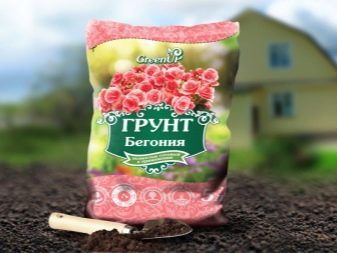
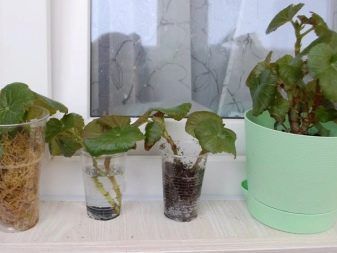
It is recommended to purchase seeds only in specialized retail outlets. In the absence of experience, it is better to take granular planting material, it is easier and easier to work with it. Regardless of this, the seeds must be treated with a weak solution of potassium permanganate. The exposure time is from 30 to 45 minutes. After washing the planting material, place it in a moist peat tablet.
All prepared tablets must be placed on a pallet. Put glass on top or stretch plastic wrap. Water must be systematically added to the pallets. It is very important that the outside of the tablet retains a moderate moisture content. Another prerequisite is heating the air in the room to at least 20-22 degrees.
It will take 14-20 days to wait for shoots. Landings dive immediately after the release of the third leaf. The second pick is done at about 8 weeks. It is better to combine this procedure with potting. With proper care and cultivation, the likelihood of disease is minimized, but you still need to beware of them.
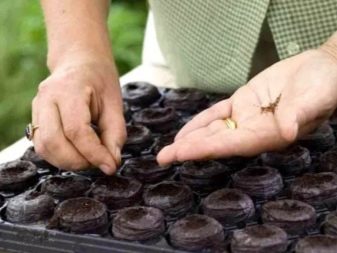

Diseases and pests
It so happens that the leaves:
- covered with small light spots;
- gradually darken;
- dry.
This is a typical manifestation of powdery mildew.
To suppress it, you can dilute 0.002 kg of copper sulfate or 0.02 kg of tar soap in 1 liter of water. If you are not limited to available tools, you can use any fungicide.
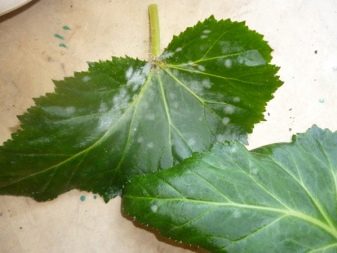

Gray rot manifests itself differently: you can first notice whitish spots with a faint gray bloom. They get darker over time. As they turn brown, these stains are moisturized at the same time. They fight gray rot with a 1% solution of a Bordeaux preparation. More modern fungicides can also be used.
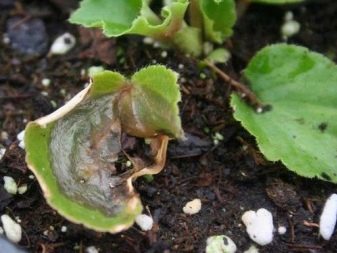
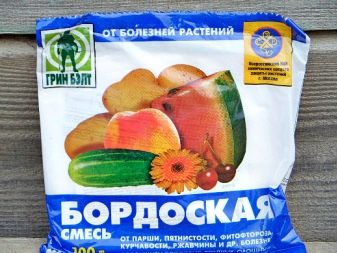
It is impossible to save begonia from bacterial spotting. It remains only to burn the diseased plant, discard the soil and disinfect the pot. The same is done with ring spot infection.
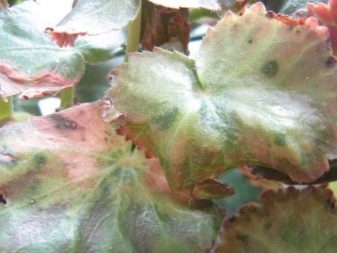
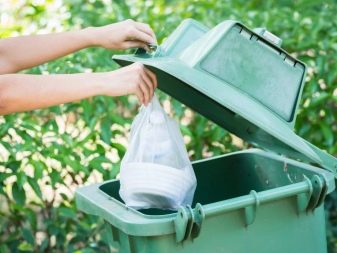
The weakening of the flower and insufficiently active flowering may be associated with the invasion of the soft false shield. In this case, the leaves become lighter and lose their shape. Spraying with garlic infusion helps against false insects. Such processing should be carried out 2 times a month.
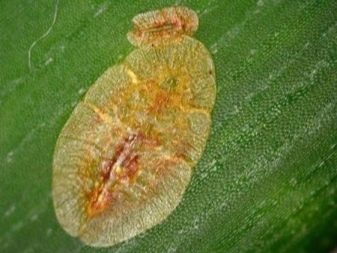
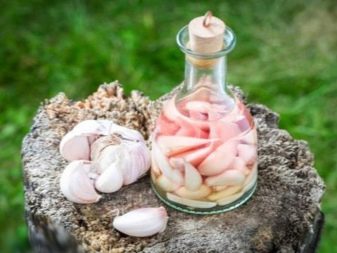
Aphids are driven out:
- a solution of laundry soap (2-3%);
- a randomly selected branded insecticide;
- 2% makhorka solution, infused for 48 hours.
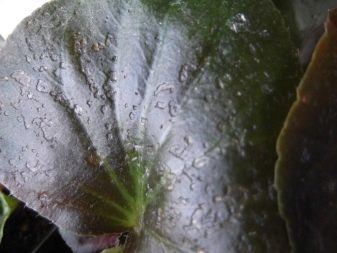
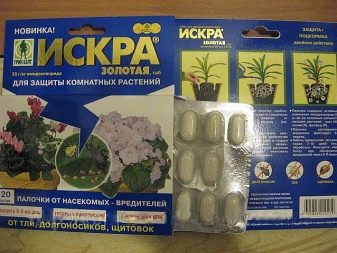
Reviews
Begonia is famous for its beauty. But at the same time, the plant is still considered quite capricious, its development is easily disturbed by the slightest adverse effects. Not only drafts, but also excessive dryness of the air have a very negative effect. Bacterial lesions are almost impossible to heal.
Judging by the reviews of florists, the Elatior species is less demanding compared to other varieties of the flower. Even when growing begonias for 2 years in a row or more, it will not stop growing. It is enough to remove old and dry branches for fresh shoots to grow rather quickly.
However, maintaining ideal conditions in winter is problematic. Florists also note the danger of leaf rusting. But the plant can be suitable for both a window sill and a flower bed.
For the breeding of begonia elatior, see below.































Thank you very much for sharing your knowledge. And when, in what month is it better to cuttings?
Vera, it is better to cut and replant in spring and summer, when it is warm and there is a lot of light for growth. The best months are April-May, when plants are actively growing.
The comment was sent successfully.